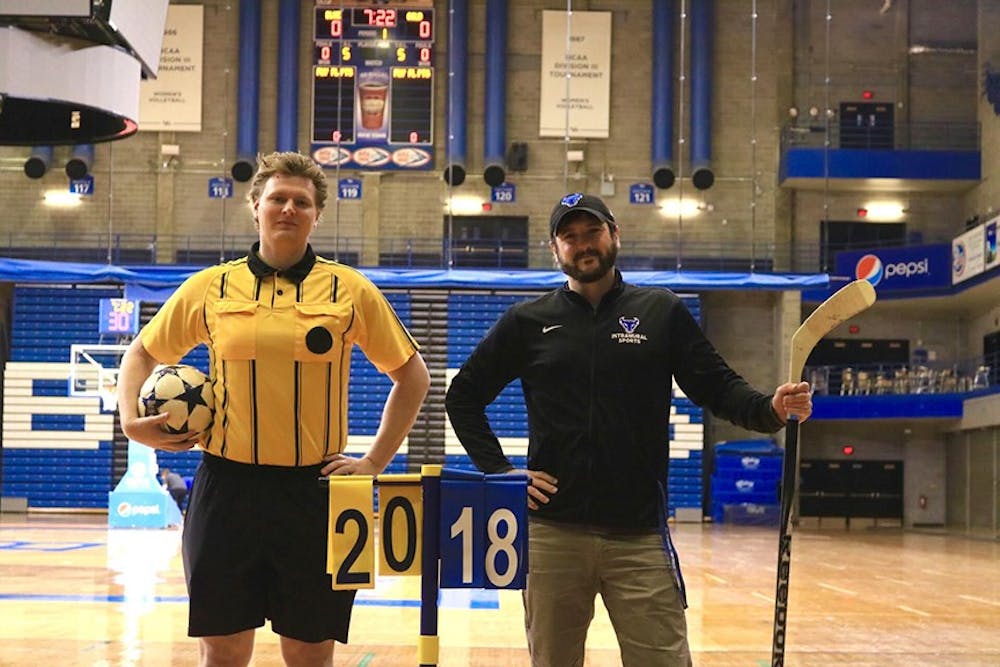UB may be a school of Division-I athletes, but that has not stopped students like Matthew Nazzaro from playing in Alumni Arena. Nazzaro, a junior biochemistry major, has been playing intramural basketball and football at UB since his freshman year.
The student recreation fee, which is $26 per undergraduate student every semester, funds intramural sports, which offers a number of programs from volleyball to floor hockey for students to play through a season, as well as other recreational programs, and the Alumni Arena and Clark Hall gyms. Special events such as tournaments are held on some weekends for those who don’t want to join a proper team. Some of the tournaments are dodgeball and badminton, with cricket being introduced this semester.
“I would encourage other students to participate in intramural sports because there are many options and different levels you can play at,” Nazzaro said. “I love to compete, and playing with my friends every week is the most enjoyable part, besides winning championships.”
Chris McClure, assistant director of Intramural Sports and Programs, is a former athlete and assistant coach at UB. McClure formerly played for the cross country and track and field team for five years before sustaining an injury that required surgery. Afterwards, he became an assistant coach for the indoor and outdoor track and field programs.
McClure is aware of the differences between intramural and D1 sports.
“D1 sports consist of scholarships student athletes receive by competing under the guidelines of NCAA,” McClure said. “Recreational sports are usually informal, in which there is no governing body or scholarships where the emphasis is about fun and fitness.”
His background in recruiting players for the track team led him to his current role. McClure is making a greater effort to acquire more players for the recreation and intramural sports program by attending orientation fairs and going to residence halls to look for students wearing their high school sports jerseys.
In fall 2017, a total of 2,212 undergraduate and 289 graduate students participated in intramural sports, according to McClure.
Josh Ulinger, a senior business major, plays intramural football and loves how he’s able to balance his time in the library while competing for fun.
“I enjoyed having space to competitively hang out with my friends and enjoy sports that I thought I would never be able to play again,” Ulinger said.
Not all students on the field are athletes. McClure also hires and manages 60-70 officials to control each game. Fourteen officials regulate other officials and make sure gameplay is running smoothly.
For McClure, his ultimate goal is to see his officials adapt and grow because people tend to change and gain experience. His job is to train and develop the students, so they can take responsibility and learn new rules.
Amanda Frederick, an exercise science major and senior head official for indoor/outdoor soccer, loves her job and is thankful for the skills she obtained.
“I have gained so much confidence in myself that translates to every other aspect of my life and I am so grateful for that,” Frederick said. “I love seeing the pure joy recreational sports bring to all students whether they play or come to cheer on a team.”
Students can register for intramural sports through IMLeagues, a database that helps students create teams and communicate with other players from across the league. The cost per team for the fall semester ranges from $75-$90 per outdoor sport team opposed to the spring semester, which costs from $65-$90.
Erik Tingue is an assistant features editor and can be reached at features@ubspectrum.com and @TingueErik.





